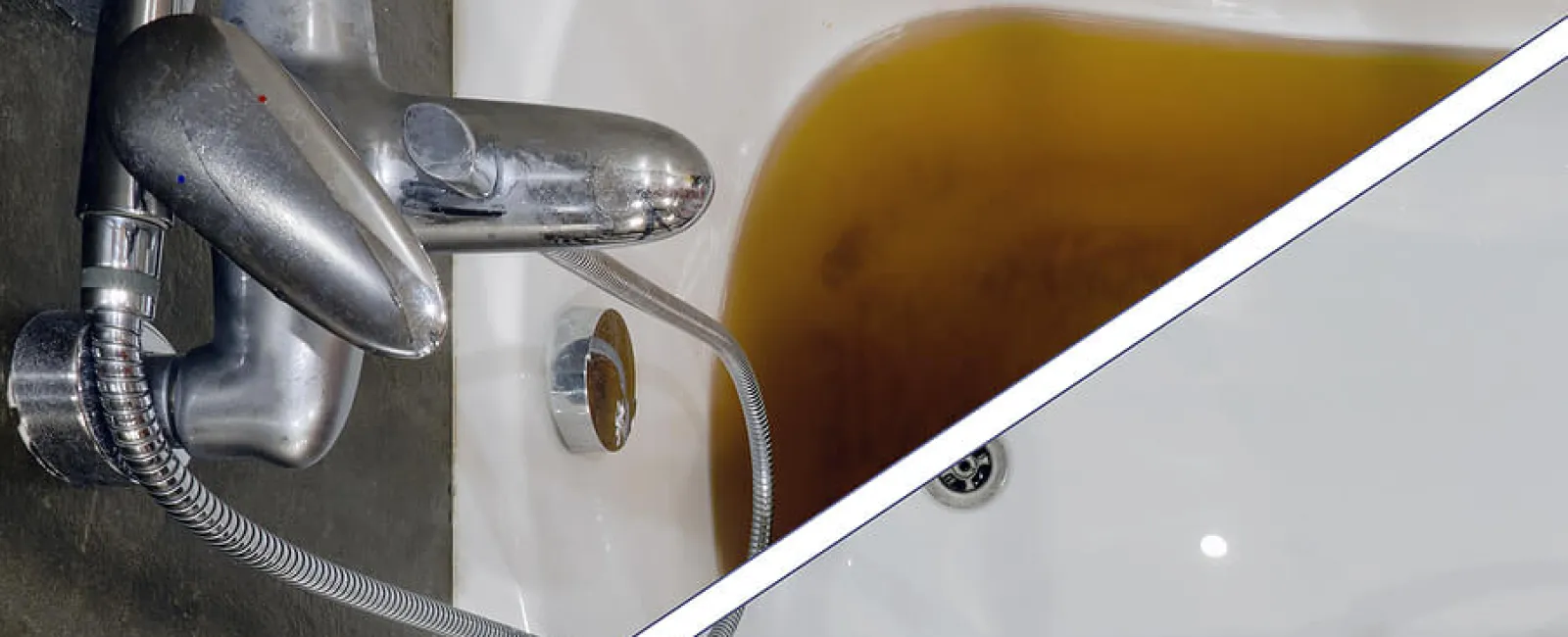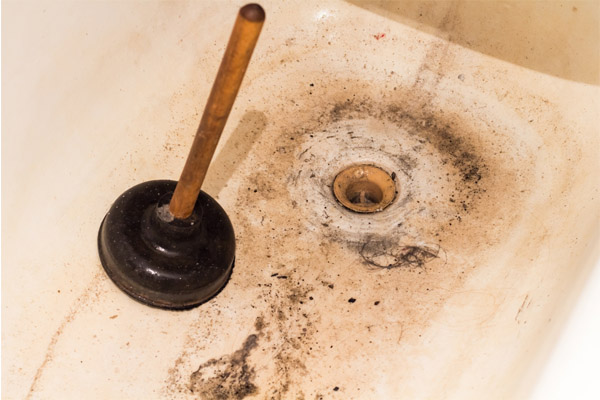Untangling the Mystery of Discharge in the Bathtub
Untangling the Mystery of Discharge in the Bathtub
Blog Article
We have discovered this article pertaining to What to Do if Sewage Starts Coming Up Through Your Bathtub below on the web and think it made sense to quickly share it with you on this page.

Sewage back-up in the tub can be an upsetting and unsanitary issue for any house owner. Not just is it troublesome, but it likewise positions major health dangers and indicates underlying problems with the plumbing system. Comprehending why sewer is coming up via the tub is vital for taking ideal action to address the issue properly.
Introduction to the Problem
Understanding the Problem
When sewage starts backing up into the tub, it's a clear sign of a trouble with the drain system. The wastewater that must be streaming away from your home is instead finding its way back right into your home, which can lead to considerable damage and carcinogen.
Potential Causes
A number of factors can add to sewage back-up in the tub. From obstructions in the sewage system line to issues with the plumbing facilities, recognizing the root cause is necessary for discovering a remedy.
Usual Reasons for Sewage Back-up
Obstructions in the Drain Line
One of one of the most usual causes of sewage backup is an obstruction in the sewer line. This can occur because of the buildup of particles, oil, or international things in the pipelines, avoiding proper flow and triggering sewer to back up right into your tub.
Tree Root Intrusion
Tree roots looking for moisture and nutrients can infiltrate sewage system lines with tiny fractures or joints. Over time, these origins can expand and expand, causing substantial damage to the pipelines and bring about sewage back-up concerns.
Aging Infrastructure
Older homes may have outdated plumbing systems that are more susceptible to deterioration, fractures, and degeneration. As pipes age, they come to be a lot more vulnerable to leakages and blockages, increasing the likelihood of sewer back-up incidents.
Heavy Rainfall or Flooding
Throughout durations of heavy rainfall or flooding, the sewer system might come to be overloaded with excess water, triggering backups and overflows. This can cause sewage supporting into bath tubs and various other fixtures inside the home.
Health Risks Associated with Sewer Back-up
Contamination of Water
Sewage backup can infect the water in your house, presenting a severe health threat to you and your family. Direct exposure to contaminated water can bring about intestinal concerns, skin infections, and various other health problems.
Spread of Disease
Sewage consists of damaging germs, infections, and parasites that can cause a range of illness, consisting of hepatitis, cholera, and gastroenteritis. Coming into contact with sewer or contaminated surface areas places you at risk of infection.
Mold Development
Moisture from sewer back-up can create suitable problems for mold and mildew development in your home. Mold spores can exacerbate respiratory troubles and trigger allergies in sensitive individuals, making prompt cleaning important.
Indicators of Sewage Backup
Foul Odors
Undesirable smells emanating from drains or components, particularly in the bathroom, may suggest sewer back-up concerns. These smells are typically strong and relentless, signifying a problem that requires immediate attention.
Slow Draining Fixtures
Bathtubs, sinks, and toilets that drain pipes gradually or not in any way could be experiencing sewer back-up. If several fixtures are influenced at the same time, it's likely that the concern originates from a typical factor, such as the major drain line.
Gurgling Noises
Weird gurgling or bubbling sounds coming from drains pipes when water is running elsewhere in the house are indicative of air entraped in the plumbing system. This air buildup can result from sewage back-up and need to be explored quickly.
Immediate Actions to Take
Switching Off Supply Of Water
In the event of sewage backup, it's vital to switch off the water to stop further contamination and damages. Find the primary water shutoff valve in your home and shut it off until the concern can be solved.
Contacting an Expert Plumber
Taking care of sewage back-up is not a DIY work. Get in touch with a qualified plumber with experience in taking care of sewage-related problems to assess the situation and do necessary repairs or cleanings.
Preventing Contact with Contaminated Water
Until the sewage backup is dealt with, stay clear of contact with contaminated water to prevent the spread of bacteria and microorganisms. Use protective gear if you should be in the afflicted area and wash your hands completely afterward.
Safety nets
Normal Upkeep of Drain Lines
Arrange routine evaluations and maintenance of your drain lines to recognize and resolve potential issues before they intensify right into major problems. This can consist of cleaning out particles, evaluating for tree root breach, and repairing any kind of damaged pipes.
Setting Up Bayou Shutoffs
Consider setting up backwater shutoffs in your plumbing system to stop sewer from receding right into your home throughout durations of heavy rainfall or flooding. These shutoffs instantly close when water draws back up, protecting your home from contamination.
Appropriate Disposal of Family Waste
Avoid purging anything other than toilet paper and human waste down the toilet to stop obstructions and obstructions in the sewer line. Dispose of oil, oil, and various other family chemicals correctly to reduce the risk of plumbing troubles.
Tidying up After Sewage Back-up
Sanitation Procedures
Extensively disinfect and sterilize impacted areas after sewer backup to get rid of harmful germs and avoid mold and mildew growth. Use ideal cleaning items and safety equipment to ensure safe and effective cleanup.
Repair of Influenced Locations
Fix any damages to floor covering, walls, or fixtures caused by sewer backup. Depending upon the extent of the damages, you may require to replace carpets, drywall, or other products to restore your home to its pre-loss problem.
Why Is Water Backing Up in My Bathtub When I Flush My Toilet?
What to do about a sewer line clog
First, don’t bother with plunging. No amount of plunging will dislodge the clog in a sewer line. The clog is too far away. Plungers are for clogs in the toilet itself, not the sewer line. Plus, the most likely causes of a sewer clog are:
Tree roots Flushed toys or feminine products Grease buildup Those items don’t move easily. And in the case of tree roots, the roots need to be cut out of the pipe and the pipe will need to be repaired.
You’ll need a closet auger. A closet auger is a type of plumber’s snake with a protective cover to keep from scratching the delicate porcelain toilet. If the clog is further down, you may need to remove the toilet or use one of your cleanouts to get to the clog.
We also recommend doing a video inspection of the drain to ensure that the cause of the clog has been completely removed. Otherwise, you could have the same problem again in a few days or weeks.
https://mspplumbingheatingair.com/blog/why-is-water-backing-up-in-my-bathtub-when-i-flush-my-toilet

I hope you enjoyed reading our post about Why is Sewage Backing Up Into My Bathtub?. Thank you for taking the time to browse our short article. Sharing is caring. You just don't know, you may very well be doing someone a favor. Thank you so much for going through it.
Click Here
Report this page